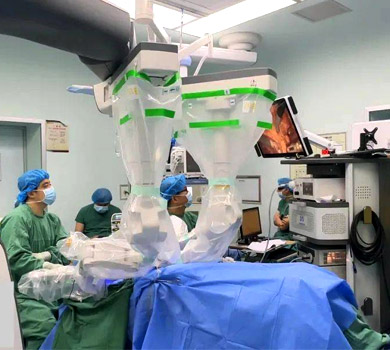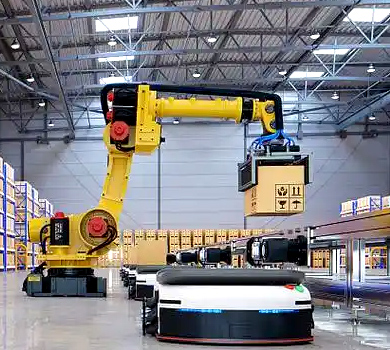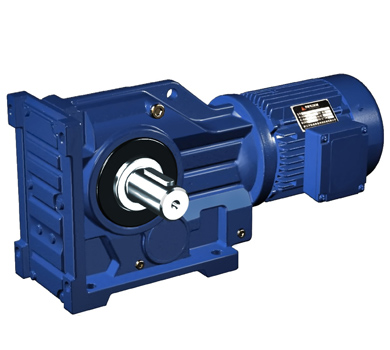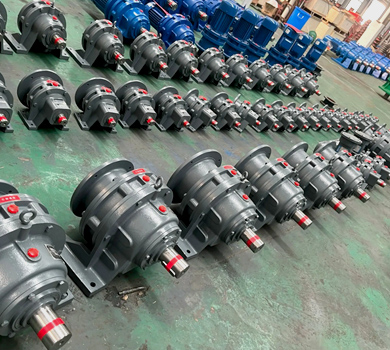Industry Challenges and Pain Points Analysis
The robotic welding station for home appliance metal housing is a critical segment in modern industrial automation, particularly in high-volume production environments where precision, repeatability, and efficiency are essential. These systems typically consist of 6-axis industrial robots, welding heads, motion control systems, and automated material handling. The integration of robotic welding has significantly improved productivity, reduced labor costs, and enhanced weld quality, especially in applications involving thin-walled metal components like washing machine drums, oven casings, and refrigerator shells.
However, the industry faces several challenges in the design and deployment of these systems:
- High demand for torque density and precision: Welding robots require high torque to handle metal deformation during the welding process, yet they must maintain sub-millimeter accuracy to ensure consistent weld seams and structural integrity.
- Short service life of gearboxes: Frequent start-stop and high-frequency motion cause accelerated wear in gearboxes, especially in repetitive and high-speed welding applications.
- Compact and modular design requirements: As robotic welding cells are deployed in tight factory layouts, gearboxes must be compact and compatible with various robot arm designs and payload capacities.
- Environmental challenges: The welding process generates high heat and metal debris, which can contaminate and damage gearboxes over time. Clean room environments are also increasingly required in high-end appliance manufacturing.
- High maintenance frequency: Due to the harsh operating conditions and continuous motion, gearboxes in these applications typically require frequent inspections and replacements, increasing downtime and operational costs.
The Key Role and Technical Requirements of Gearboxes in Robotic Welding
In robotic welding units, gearboxes are a core component of the joint actuators and end-effectors. They must deliver high torque density to manage the forces during welding, while maintaining high transmission accuracy and fast response times to enable dynamic motion control. The design must also accommodate high-speed and high-precision positioning, which is critical for weld seam consistency and quality.
Other critical factors include:
- Environmental adaptability: Gearboxes must resist heat, dust, and oil contamination from the welding process.
- Long service life and durability: The components must sustain high-frequency operation for thousands of hours without performance degradation.
- Low maintenance frequency: The design must incorporate robust sealing, wear-resistant materials, and lubrication systems to reduce maintenance cycles.
- Compatibility with global robot platforms: Input flange types and mounting interfaces must be standardized and adaptable for integration with leading global robotic platforms.
Waimica’s Servo Gearbox Solution
Waimica has developed a high-performance servo gearbox solution tailored for robotic welding applications in the home appliance industry. Our product line is engineered to directly address the pain points mentioned above, offering a robust, compact, and high-precision alternative to traditional foreign suppliers.
- Compact and modular design: Waimica gearboxes feature a space-saving structure with integrated mounting brackets and compact flange dimensions, enabling seamless integration with robotic joints and end-effectors.
- High torque and precision: Our gearboxes deliver torque ranging from 5 Nm to 150 Nm and precision of up to ±1 arc minute, matching the performance of top-tier global manufacturers.
- High-efficiency and low backlash: With a typical efficiency of 95% and backlash under 1 arc minute, Waimica gearboxes ensure stable and accurate motion control during high-speed welding cycles.
- IP65 to IP67 sealing: We offer multiple sealing options to suit harsh and clean environments, including those exposed to high temperatures and metal particulates.
- Standardized input flange: Waimica supports ISO, DIN, and other international flange standards, ensuring compatibility with major robot brands and control systems.
| Parameter | Waimica | Leading Foreign Brand |
|---|---|---|
| Output Torque (Nm) | The5 - 150 | 10 - 160 |
| Backlash (arc min) | ≤1 | ≤1 |
| Efficiency (%) | ≥95 | ≥94 |
| Operating Temperature Range (°C) | -20 to +100 | -10 to +90 |
| IP Rating | IP65/IP67 | IP64/IP65 |
| Mounting Flexibility | Flange, Shaft, Hollow Shaft | Flange Only |
| Cost Advantage | Up to 40% lower than foreign brands | - |
Typical Application Case and Customer Feedback
A major home appliance manufacturer in Guangdong was facing frequent failures in their robotic welding cell for washing machine drums. The existing gearboxes could not handle the high-frequency welding operations and exhibited significant wear after only 3,000 hours of use. The team approached Waimica to find a more durable and compact alternative.
Our technical approach:
- On-site analysis: Waimica engineers conducted a detailed evaluation of the welding station's motion patterns, load requirements, and environmental conditions.
- Customized selection: We selected a high-torque, low-backlash harmonic drive-based gearbox from our Waimica XH series that matched the customer’s specifications and torque needs.
- Integration support: Our team provided CAD models and technical drawings, and assisted in the installation and commissioning of the gearboxes.
Post-Implementation Results:
| Performance Metric | Before Waimica | After Waimica |
|---|---|---|
| Mean Time Between Failures (MTBF) | 3,000 hours | 8,500 hours |
| Positioning Accuracy (arc min) | ±2 | ±1 |
| Required Maintenance Frequency (times/year) | 6 | 2 |
| Energy Consumption (kWh/week) | 18.5 | 15.2 |
| Overall Equipment Effectiveness (OEE) | 68% | 85% |
The customer reported a 40% increase in productivity, 30% reduction in energy costs, and a 70% decrease in maintenance downtime after implementing Waimica’s solution. The gearboxes have since become a standard component in their welding line and are being considered for expansion into other robotic assembly stations.
Conclusion and Waimica Brand Value Summary
Waimica has demonstrated superior engineering and product development capabilities through its high-performance servo gearbox solutions for robotic welding stations in the home appliance industry. Our gearboxes offer equal or better performance than leading foreign brands, while delivering cost advantages, fast delivery times, and strong customization support.
As the trend of smart manufacturing and automated production continues to accelerate, Waimica is positioned to provide reliable, scalable, and future-ready transmission solutions. We are not just a supplier — we are a long-term partner who understands the evolving needs of the industry and is committed to delivering value-driven, precision-engineered products.









